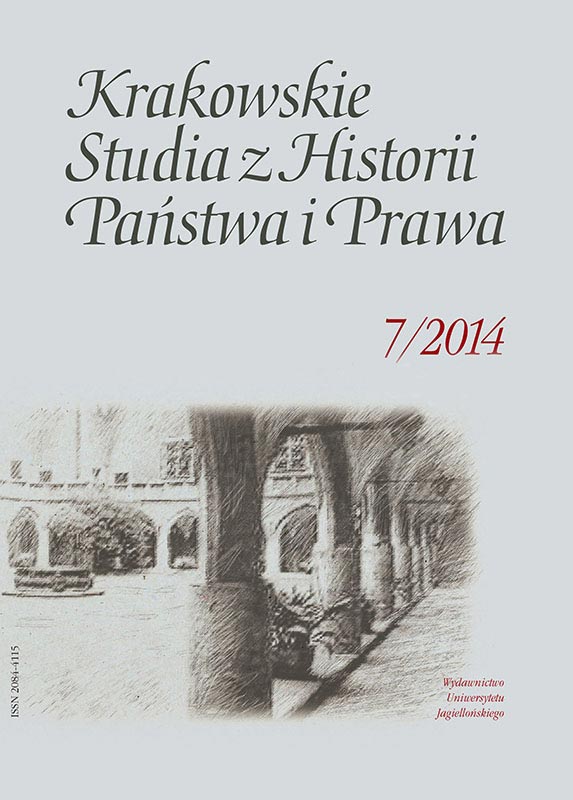Dziedziczka Imperium Rosyjskiego Anna Iwanowna 1730–1740
Heiress of the Russian Empire Anna Ivanovna 1730–1740
Author(s): Krystyna ChojnickaSubject(s): Law, Constitution, Jurisprudence, History of Law
Published by: Wydawnictwo Uniwersytetu Jagiellońskiego
Keywords: Anna Ivanovna; tsarist autocracy; Peter the Great; Russian Empire; tsar; The Supreme Privy Council
Summary/Abstract: After the death of its creator, Peter I, Russia owes the continuation of the task of building the empire to four women – Catherine I, Ann, Elizabeth and Catherine II. The above four women had played an important role in the development of the autocratic system in the Russian state. The power of a Tsarist autocratic ruler was the foundation of his political position at least until the middle of the 19th c. The effectiveness in the execution of the rulers resolutions decided about this right to the throne; it constituted a specific legitimization of power. A weak ruler was often removed through armed rebellion or the spreading of rumors whereas a “true,” strong tsar was installed in his place. The imperial power in Russia was unlimited – it was believed to come from God and sometimes it was even identified with the will of the Nation. The latter theory was opposed by Marxist historiography which gave priority to the social-economic structure of Russia. The women ascended to the throne at a difficult moment in Russia’s history, namely after the death of Peter the Great; they were the potential target of attacks from the aristocratic, court, and army opposition circles, as well as the so called Old Believers, or even ordinary people. The rule of Catherine I who became the successor of Peter and the rule of Peter II, was marked by the stigma of rivalry among the aristocratic and courtly circles. Thanks to the support of the Supreme Privy Council, after the death of Peter II, it was Princess Anne of Courland who ascended to the throne in Russia. The assessment of her rule in historiography varies considerably – for instance, the influence of Anne’s favorite – Biron has been rather negatively assessed. The above pejorative appraisal of Princess Anne’s rule may have its source in the way in which the contemporaries tried to justify the Elizabeth’s coming to power in 1717. Anna became a ruler thanks to the support of aristocracy which strove for power in Russia. She accepted the “Stipulations” – or written conditions of her ascension to the tsarist throne; the latter had limited the ruler’s prerogatives. The Imperial Guards and the gentry under the leadership of Prokopowicz and Tatiszczew had stood on the side of strong tsarist rule. Having taken advantage of the support that was granted to her, Anna had seized autocratic rule, liquidated the Privy Council, crushed the opposition of the aristocrats and resumed a continuation of the reforms in the manner of Peter the Great. She strengthened tsarist autocratic authority, laying the foundations for this form of government for the decades to come.
Journal: Krakowskie Studia z Historii Państwa i Prawa
- Issue Year: 7/2014
- Issue No: 2
- Page Range: 201-216
- Page Count: 16
- Language: Polish

